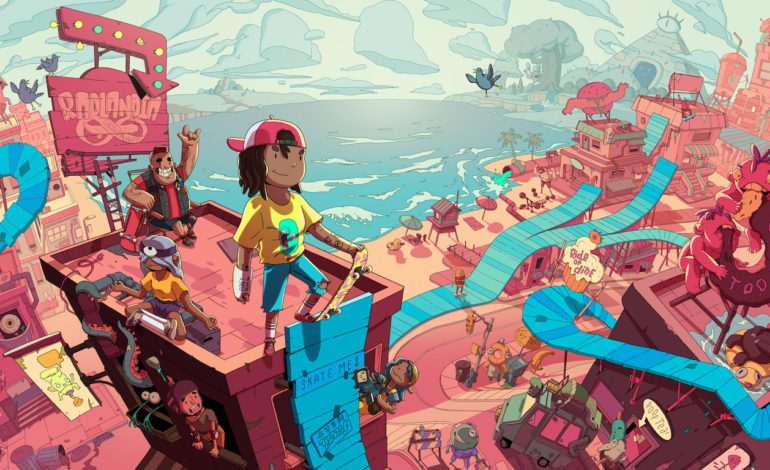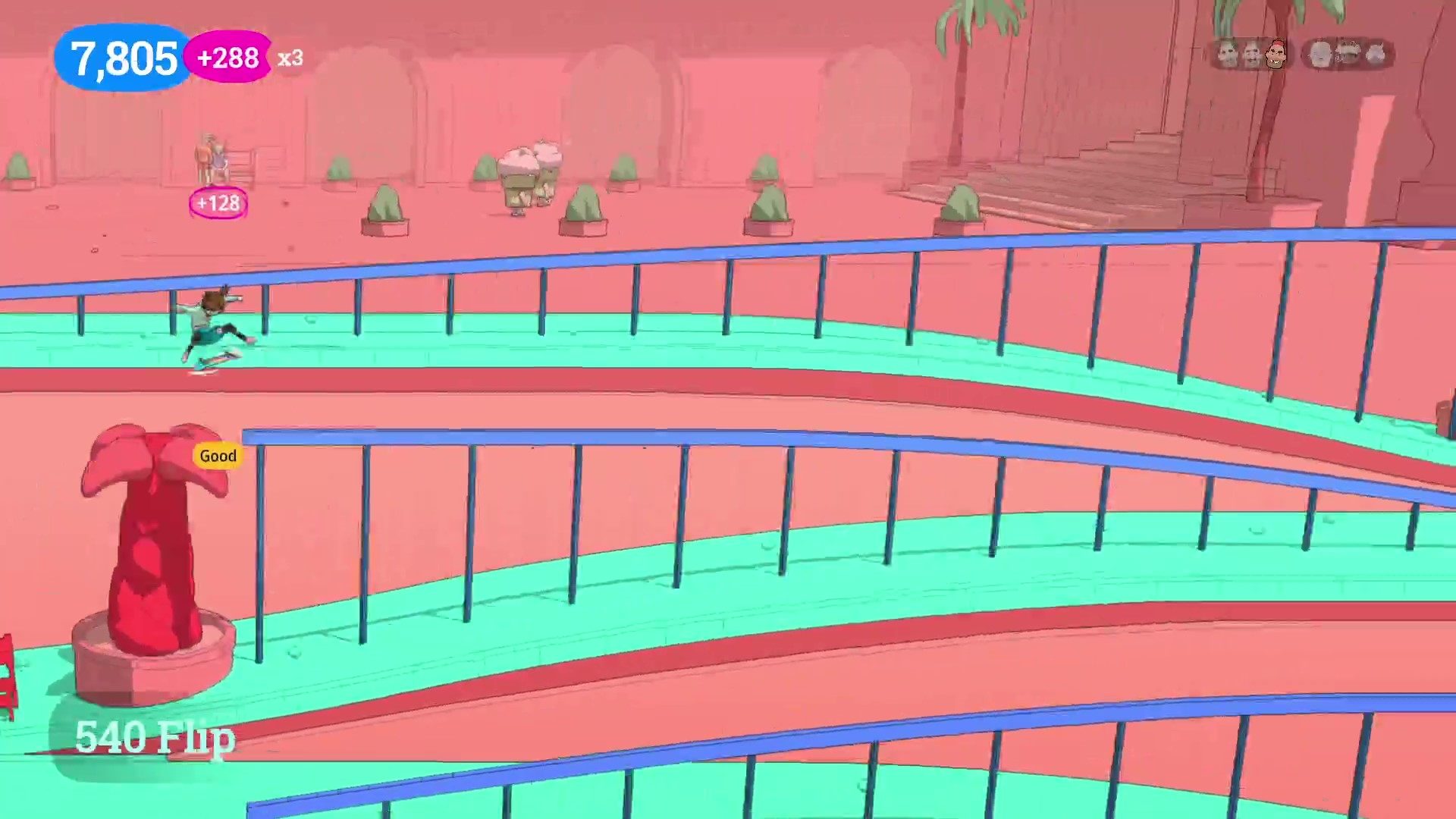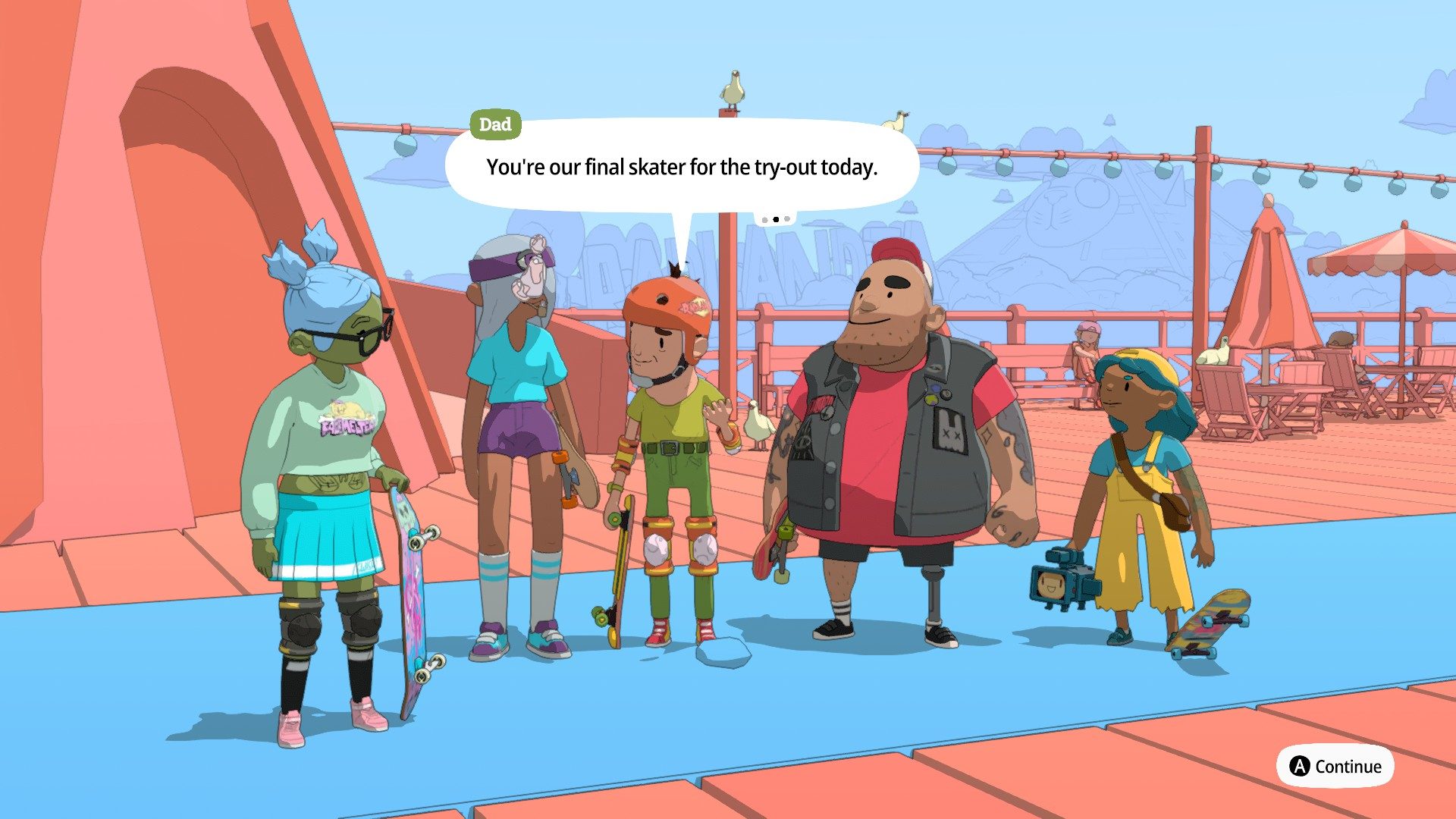

Released in February of this year, OlliOlli World hit current and next-gen consoles as well as PC and aims to bring a new visual style and experience to the OlliOlli series, deviating from the more grounded, street-skating aesthetic of the two previous games in the series, adopting a more cartoony style reminiscent of the ’80s skate scene. The gameplay takes a little adjustment if you’re coming over from other skating games, and the story can get in the way at times, but OlliOlli World brings a solid and unique video game skating experience.
Something you’ll notice immediately about the OlliOlli games is that, unlike many other skating games, they’re platformers. Admittedly, this put me off of the OlliOlli games for a good while, as I doubted that they would be able to create the same experience as something like the Skate games, but the platforming mechanics actually work extremely well for the kind of game that OlliOlli World wants to create.
The game has you play through very traditional platformer levels, moving from left to right, completing jumps, and avoiding obstacles, but, as a screen at the start of the game will warn you, the game moves extremely fast. OlliOlli World thrives on speed, and you will rarely ever find yourself going much slower than an absolutely breakneck pace. The game gives you a couple of different pushes (regular and power), but most of your speed will come from simply barreling downhill at dangerous rates. It feels really good to play as fast as you do, and, perhaps most impressively, the game’s level design handles it far better than I expected.
In platformers, I often find myself frustrated by difficult jumps or gaps that I feel were unfair, and OlliOlli World had basically none of these moments for me. Aside from a couple of jumps on the more difficult levels, the levels were immaculately designed to allow you to move as fast as possible without having to worry too much about frame-perfect timing. That’s not to say that the game doesn’t have difficulty, but rather that the game’s difficulty comes more from reflexes and learning the rhythm of the levels than from arbitrarily precise platforming moments. This balance makes the game much more pleasant for me than I generally find platformers and I was thoroughly surprised by how much I enjoyed it.


The other key element of the gameplay, as you would expect from a skateboarding game, is the trick system. Tricks in OlliOlli World work similarly to the Skate games, requiring you to input movements on a singular stick, but instead of flicking that stick at the end, you just need to release it, and the trick you do simply depends on how you spun the stick before releasing it. This system annoyed me at first, as I kept instinctively flicking the stick and I thought that just releasing the stick seemed a little simple (not to mention it means that there are fewer possible tricks), but as the game got faster and the levels got more complex the release system started to work very well with the rest of the game and allowed for complex combos to be linked even between rapid-fire grinds and wallrides.
The one gripe I do have with the trick system (and really the level design in general) though, is that tricks in the game rarely ever feel important. In a game like Skate 3 (which is still pretty arcade-y), tricks and points are hard enough to do that the missions in the game center around landing specific tricks or finishing certain lines. Because of how OlliOlli World is designed though, the individual tricks, or even the points, don’t matter as much as just getting to the finish line. This isn’t necessarily a fault of the game, I suppose, but it does mean that the game won’t scratch the same itch as other skating games, in case you were wondering.
The name OlliOlli World may at first suggest an open-world game, as so many modern games are, but instead it references the Super Mario World approach to the word “world”, and it actually gives the player hub world in the style of Super Mario World. The world has five areas that the player unlocks as they play through the game as well as an area called “Gnarvana”, which has a handful of additional things, like an endless mode that generates levels based on the areas that you have unlocked up to that point.
The hub world, while something that many platformers have nowadays, helps to make the “World” in “OlliOlli World” feel more authentic and interesting. That, in addition to the characters that guide you through all the levels and the characters you meet in the different areas, does a wonderful job of making a cohesive world that feels special.


The style of OlliOlli World also surprised me more than I thought it would. If you read my review of Riders’ Republic you would know that I did not particularly care for the game’s “visual barf” approach to emulating skate culture and character customization. The game really seemed to want to give players the ability to be as wacky as possible without actually understanding what makes skate culture work, but OlliOlli World, while having a similar style on the surface, actually makes it work pretty well. The character customization, while similarly broad to Riders’ Republic, stays very grounded in its distinct visual style, which blends color schemes from old-school skate aesthetics with character styles reminiscent of Cartoon Network shows like Adventure Time and Regular Show. The dialog of the game did get on my nerves quite a bit, as it rarely offers any important information and really just takes up space, but luckily the game gives you the ability to skip the dialog at the start of every level so it wasn’t even an issue.
OlliOlli World won’t fill the void that games like Skate 3 created in for people, but it will appeal to existing platform players and just might pull in some people that don’t normally play platformers as well (like me). The game won’t blow your mind, but I am genuinely surprised at how tight and well-designed its experience is. The levels present just the right amount of challenge in just the right way and I would highly recommend giving it a whirl.
Score 8 out of 10
Reviewed on PC
Play games, take surveys and take advantage of special offers to help support mxdwn.
Every dollar helps keep the content you love coming every single day.
